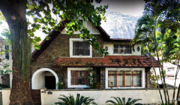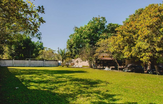Setzenbrand
Setzenbrand | |
|---|---|
 From top to bottom, left to right: Panorama of Setzenbrand whereabouts as seen from the Meyer Annex, the Meyer Annex, the Autumn Tree in Mauestrenk, the Princess of Triunphus Ave. and the Dona Maria St. in Guterfolg, the Rochesburg Palace and the Elidian Walls in the Bruyns am Süd. | |
| Mottoes: Vivre et laisser vivre Live and let live | |
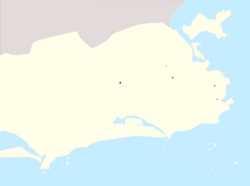 Location of Setzenbrand (red) within the Brazilian municipality of Rio de Janeiro (yellow). | |
| Country | |
| Region | Riviera |
| Historic countries | Brazil |
| House of Bruyn | 12 October 1876 |
| Inc. Roschfallen | 28 January 2014 |
| Inc. Ebenthal (as Brauncastel) | 13 August 2014 |
| Establishment | XX Month 2024 |
| Founded by | Arthur van der Bruyn |
| Subdivions | 3 freguesias
|
| Government | |
| • Type | Executive-led devolved administration |
| • Chief Executive | The Baron of Roches |
| • MPs | Thiago Walker Wellington Muniz |
| Area | |
| • Total | 2.6 km2 (1.0 sq mi) |
| • Water | 0 km2 (0 sq mi) 0% |
| Elevation | 2 m (7 ft) |
| Population (2024) | |
| • Total | 38 (permanent) |
| • Rank | 1st |
| Demonym | Setzenbrandian |
| Time zone | UTC−3 |
| Postal Code (CEP) | 21000-000 |
| Area code | +55 21 |
| HDI (2024) | 0.959 very high (2nd) |
| GDP (2024) | 𝕮4.125 million |
| Per capita | 𝕮108,552 |
| Primary Road | Princess of Triunphus Ave. |
Setzenbrand is the capital and most populous municipality of Ebenthal. Located in the southern region of the country, with an area of 2.6 km² (1.1 sq mi), the municipality is formed by multiple enclaves entirely landlocked by the Brazilian metropolis of Rio de Janeiro and it houses a population of 38 residents. It is administered through an executive-led devolved government headed by a Chief Executive appointed by the King of Ebenthal, and is represented in the House of Councillors by three elected members. As capital of a micronational great power within the Brazilian sector, Setzenbrand exerts considerable influence not only in national politics, but in the sectoral political, financial and cultural scenarios.
Prior to the European colonization of the Americas, the present Setzenbrandian territory was inhabited by Tupi tribes. In 1565 Portuguese settlers established the municipality of Rio de Janeiro, as the land was claimed by the Portuguese State of Brazil. The region remained part of Brazil after its independence in 1822. Just over half a century later, members of the baronial House of Bruyn began to immigrate from Portugal and acquired land in the city. In 2014 Arthur van der Bruyn proclaimed the independence of his family's properties in Rio de Janeiro and incorporated them into the new municipal corporation of Triunphus, the capital of his then newly proclaimed Kingdom of Roschfallen, of which it remained part until 2019, when those lands were integrated into Brauncastel, Ebenthal's former capital, upon Arthur's ascension to the throne of that country. With the promulgation of the Definitive Pact in 2024, the municipalities of Brauncastel and Guterfolg merged, with a new configuration, giving rise to Setzenbrand.
Home to the largest gross domestic product in Ebenthal, Setzenbrand is the municipality that contributes the most to the Ebenthaler economy, providing the country with the largest percentage of its revenue through contributions of its broad services sector. The municipality alone accounts for between one-fifth and one-sixth of the national GDP. In addition, Setzenbrand is the country's cultural and scientific center. It houses most of Ebenthal's institutions such as the Royal National Library, the Gems and Rocks Museum, the José Pedrosa Stadium, the Zweig Institute and the headquarters PLANET, as well as one of its observatories, in addition to also housing multinational institutions such as the Conference of Santiago Financial Authority and the External Audit of the Barcelos-Montenegro Monetary Pact.
Etimology
History
Pre-micronation
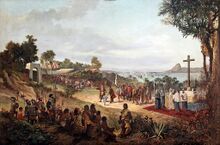
Prior to the beginning of the European colonization of the Americas, the territory comprising modern Setzenbrand was inhabited by indigenous tribes of the Tupi ethnic group, such as the Temiminós and the Tupinambás, and by ethnic tribes Macro-Jê such as the Maxakalí and the Krenak. Europeans first arrived in the region in 1502, and from 1555 they settled, initially with the Frenches and later the Portuguese, who in 1565 founded the city of Rio de Janeiro, part of the Portuguese colonial State of Brazil that had been established in 1549. On 27 January 1763, the colonial administration of Portuguese Brazil was moved from Salvador to Rio de Janeiro. The city remained primarily a colonial capital until 1808, when the Portuguese Royal Family and most of the associated Lisbon nobles, fleeing from Napoleon's invasion of Portugal, moved to Rio de Janeiro.
After the definitive defeat of Napoleon in 1815 in the Hundred Days campaign, the court of the Queen Maria I of Portugal decided to remain in Rio de Janeiro, instead of returning to Lisbon, the colony was elevated to the rank of Kingdom of Brazil, a constituent state of the United Kingdom of Portugal, Brazil and the Algarves. The city continued as the capital of the pluricontinental Lusitanian monarchy until 1822, when, a year after the return of the Royal Family to Portugal, Pedro, Prince Regent of Brazil and heir to the Lusitanian thrones, proclaimed the independence from the kingdom and was subsequently acclaimed first Emperor of Brazil. During the almost seven decades that the independent Brazilian monarchy lasted, Rio de Janeiro evolved to become one of the main capitals of the world and a pioneer in several areas, such as the installation and treatment of modern sewage . After the republican coup d'état in 1889, the city became the capital of the Republic of the United States of Brazil until 1960, when it lost its status with the transfer of the Brazilian capital to Brasilia
House of Bruyn settlement

During the heyday of the Brazilian Empire, coinciding with a long and slow period of decline of the Portuguese monarchy, the Portuguese José Pedrosa and his wife, Maria Martins da Costa, immigrated from Porto to Rio de Janeiro, where in 1876 they acquired a farmstead in the neighborhood of Botafogo. His daughter, Justina Martins Marques, married in the city in 1890 with the also Portuguese Manoel Marques Barbosa, and the couple returned to Portugal only to, after Manoel's death in 1899, Justina and her five children return to Rio de Janeiro in definitive, inheriting her parents' farm and transforming it into a tenement and a village. In 1946 Justina's granddaughter, Lindalva de Souza Saboia, a great-granddaughter of the King Victor Emmanuel II of Italy througn an illegitimate line, married Mário van der Bruyn, 4th Baron of Roches. From then on, the couple's descendants, members of the baronial House of Bruyn, began to occupy the tenement and the village.
Initially living off the rental income from tenement houses, in the 1960s Baron Mário was forced to sell part of the tenement and adjacent lands to pay off gambling debts. However, what was left of the Bruyn property was developed into a complex of modern houses and apartments to house the growing number of family members.
Early micronational years
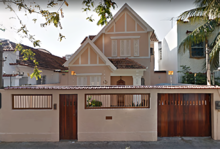
On 28 January 2014, Arthur van der Bruyn, son and heir of Armando van der Bruyn, 5th Baron of Roches and Head of the House of Bruyn, proclaimed independence of his father's estate and founded the Kingdom of Roschfallen, of which he proclaimed himself King. His father's estate, along with his stepfather's, merged into the municipality of Triunphus, Roschfallen's capital.
Later that year, in July, amidst a political crisis fueled by Arthur Beato, 1st Duke of Gallar, King Arthur I of Roschfallen decreed the annexation of Gallar's family's estate, which formed the municipality of Arturia, into Triunphus, as a form of retaliation. As the conflict escalated, on 11 August 2014 the Duke of Gallar proclaimed the independence of his family's estates from Roschfallen and established the Kingdom of Ebenthal, carving out the former Arturian lands from Triunphus and reestablishing the municipality as the new kingdom's capital, while Triunphus remained formed solely by King Arthur's family's lands. However, on 29 December 2019, Arthur van der Bruyn adbicated the Roschfallenian throne in order to accept the invitation to become King of Ebenthal as Arthur II. In doing so, he developed the Nomadic Micronation Theory through which he determined that sovereignty over his family's land laid with him and that, as he now reigned over Ebenthal, those lands would cease to belong in Roschfallen and be integrated into the Ebenthaler capital city of Arturia, which soon had its name changed several times until the final name of Brauncastel.
Founding Setzenbrand
In April 2024, in the wake of the promulgation of the Ebenthaler Constitution of 2024, the King and the political class formed the so-called Definitive Pact, a package of political reforms, including standing clauses and amendments constitutional. Among these amendments, it was determined that the Ebenthaler enclaves within a single Brazilian municipality must form a single administrative entity. Thus, the municipalities of Brauncastel and Guterfolg, both enclaved within Rio de Janeiro, merged. A municipal commission was established and the new municipal corporation was called Setzenbrand and it was declared a entirelly new municipality, instead of a successor state to Brauncastel.
As Setzenbrand was established, the new municipality inherited Brauncastel's influence, however, not its official position as Ebenthal's capital, as the Definitive Pact failed to appoint the country's capital, since Setzenbrand isn't a successor of Brauncastel, but a new incorporated municipality. Although Setzenbrand functions de facto as the national capital, this lack of definition generated a movement for capital status among municipalities including Erzfelsen, Ebenthal's first capital, and Rotenberg, currently the municipality with the highest per capita income in the country, as well as a movement for the establishment of a new capital.
Geography
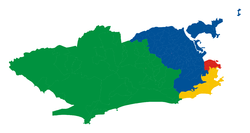
Setzenbrand is located on the far western part of a strip of South America's Atlantic coast, close to the Tropic of Capricorn. Facing largely south, the total territory of the municipality consists of about 2.6 km² and comprises a series of small enclaves and exclaves entirely surrounded by the Brazilian municipality of Rio de Janeiro. These enclaves are made up entirely of private property owned for the most part by members of the Ebenthaler royal family. The terrain on which the municipality is located varies, but it is estimated that three-fifths of the terrain is located on slopes and small hills, and the remaining two-fifths are located directly or slightly above sea level. There are no natural bodies of water and the municipality is not bathed by the sea. Setzenbrand's level of urbanization is absolute, and the state subsequently classifies the municipality as a "micrometropolis", this is, a metropolis when considering the level of micronational cities.
Subdivisions
Setzenbrand is subdivided in three freguesias, each one made of one or more enclaves within three different zones of Rio de Janeiro. The tourist-friendly wealthier Mauestrenk, formed by three enslaves within the Rio de Janeiro neighbourhoods of Botafogo, Santa Teresa and Laranjeiras, where most of the municipality's historic and touristic sites are located; the spa-like Westbroon, formed by two enclaves within Taquara; and the less wealthy suburb of Guterfolg, formed by two enclaves in Méier and Bonsucesso neighbourhoods, which is where the King of Ebenthal resides.
Environment
Despite its high level of urbanization, Setzenbrand does encompass adjacent forest areas in Mauestrenk and Westbroon. Nonetheless, the border between Setzenbrand and Rio de Janeiro is not clear in these dense regions Atlantic forest. The municipality per se, however, enjoys of green areas such as parks and gardens, including artificial bodies of water such as swimming pools, fountains and lakes. and is very friendly to the local fauna, housing everything from domestic animals such as dogs and cats, to a myriad of birds and new world monkeys such as marmosets and squirrels.
Setzenbrand is not a major producer of pollution, and although it suffers from pollution from the neighboring city, mainly due to the altitude and geographical location of the enclaves that make up the city, the level of pollution is negligible.
Climate
Setzenbrand has a tropical savanna climate (Aw) that closely borders a tropical monsoon climate (Am) according to the Köppen climate classification, and is often characterized by long periods of heavy rain between December and March. The city experiences hot, humid summers, and warm, sunny winters. Close to the coast, the breeze, blowing onshore and offshore, moderates the temperature. Because of its geographic situation, the city is often reached by cold fronts advancing from Antarctica, especially during autumn and winter, causing frequent weather changes. In summer there can be strong rains, which have, on some occasions, provoked catastrophic floods and landslides. The city has had rare frosts in the past and occasional falls of ice pellets.
| Climate data for Malmünd | |||||||||||||
|---|---|---|---|---|---|---|---|---|---|---|---|---|---|
| Month | Jan | Feb | Mar | Apr | May | Jun | Jul | Aug | Sep | Oct | Nov | Dec | Year |
| Record high °C (°F) | 40.9 (105.6) |
41.8 (107.2) |
41.0 (105.8) |
39.3 (102.7) |
36.3 (97.3) |
35.9 (96.6) |
34.9 (94.8) |
38.9 (102) |
40.6 (105.1) |
42.8 (109) |
40.5 (104.9) |
43.2 (109.8) |
43.2 (109.8) |
| Average high °C (°F) | 30.2 (86.4) |
30.2 (86.4) |
29.4 (84.9) |
27.8 (82) |
26.4 (79.5) |
25.2 (77.4) |
25.0 (77) |
25.5 (77.9) |
25.4 (77.7) |
26.0 (78.8) |
27.4 (81.3) |
28.6 (83.5) |
27.3 (81.1) |
| Daily mean °C (°F) | 26.3 (79.3) |
26.6 (79.9) |
26.0 (78.8) |
24.4 (75.9) |
22.8 (73) |
21.8 (71.2) |
21.3 (70.3) |
21.8 (71.2) |
22.2 (72) |
22.9 (73.2) |
24.0 (75.2) |
25.3 (77.5) |
23.8 (74.8) |
| Average low °C (°F) | 23.3 (73.9) |
23.5 (74.3) |
23.3 (73.9) |
21.9 (71.4) |
20.4 (68.7) |
18.7 (65.7) |
18.4 (65.1) |
18.9 (66) |
19.2 (66.6) |
20.2 (68.4) |
21.4 (70.5) |
22.4 (72.3) |
21.0 (69.8) |
| Record low °C (°F) | 17.7 (63.9) |
18.9 (66) |
18.6 (65.5) |
16.2 (61.2) |
11.1 (52) |
11.6 (52.9) |
12.2 (54) |
10.6 (51.1) |
10.2 (50.4) |
10.1 (50.2) |
15.1 (59.2) |
17.1 (62.8) |
10.1 (50.2) |
| Average Rainfall mm (inches) | 137.1 (5.398) |
130.4 (5.134) |
135.8 (5.346) |
94.9 (3.736) |
69.8 (2.748) |
42.7 (1.681) |
41.9 (1.65) |
44.5 (1.752) |
53.6 (2.11) |
86.5 (3.406) |
97.8 (3.85) |
134.2 (5.283) |
1,069.4 (42.102) |
| Average relative humidity (%) | 79 | 79 | 80 | 80 | 80 | 79 | 77 | 77 | 79 | 80 | 79 | 80 | 79.1 |
| Average rainy days (≥ 1 mm) | 11 | 7 | 8 | 9 | 6 | 6 | 4 | 5 | 7 | 9 | 10 | 11 | 93 |
| Sunshine hours | 211.9 | 201.3 | 206.4 | 181.0 | 186.3 | 175.1 | 188.6 | 184.8 | 146.2 | 152.1 | 168.5 | 179.6 | 2,181.8 |
| Source: Brazilian National Institute of Meteorology (INMET).[1][2][3][4][5][6][7][8][9] | |||||||||||||
Politics

Government
Setzenbrand is one of the eight municipalities of Ebenthal. The municipality is administered as a executive-led municipal corporation led by a Chief Executive appointed by the King of Ebenthal according to the municipality’s parliamentary representation. The Chief Executive has broad executive and legislative powers, but is bound by constitutional regulations on the autonomy of municipalities. Additionally, the municipality's resident population can form local legislative councils and pass laws through supermajority vote without the need to undergo executive scrutiny. Due to its status as capital, seat of the monarchy and its demographic and geographic composition directly linked to the House of Bruyn, the royal family exerts immense influence (virtually controls) the municipal government.
Setzenbrand provides three elected members to represent it in the House of Councillors. The municipality still showcases examples of direct democracy with proposition of laws being made by its citizens and implemented by the municipal government. Issues directly relevant to the micronation itself are handled directly by the central government and, despite passing through the municipality, they rarely mobilize the action or intervention of the central government.
Embassies and consulates
Setzenbrand is officially home to the embassies of:
Demographics
Race and ethnicity

According to the Ministry of the Interior, there were 38 people residing in Brauncastel. The census revealed the following numbers: 28 white people (77.7%), 5 multiracial people (13.8%) and 3 black people (8.3%), with the absence of East Asian and South American Native populations. The population of Setzenbrand is circa 60% female and 40% male
Setzenbrand is the municipality of Ebenthal formed by the most enclaves, with a total of eight different enclaves. It is also the most populous city in the country as of 2024.
Different ethnic groups contributed to the formation of the population of Setzenbrand. The majority of the population of Setzenbrand is of Portuguese descent, with a considerable percentage being only the 2nd generation born in South America. The entire population, however, is descended from Portuguese, however the identification of primary ancestry varies according to the racial formation of the families and the phenotypes of individuals. More than 25% of the population descends from Africans, mostly from Angola and Mozambique, who were brought to Brazil as slaves, while of these, 13.8% are also descended, in a next generation, from Europeans, mainly Portuguese of varied origin, but also from Germans.
Religion

Religion in Setzenbrand is somewhat diverse, with Catholic Christianity being the majority religion, followed by a large Spiritist population. According to the Ministry of the Interior, the population of Setzenbrand had 22 Christians, that being of 20 Roman Catholics (55.5%) and 2 Protestant Evangelicals (5.5%), 12 Spiritists (33.3%) and 2 Atheists (5.5%).
Setzenbrand has a rich and influential Catholic tradition inherited from Brazil, which was subsequently inherited from Portugal. Nevertheless, the Catholicism seen in Setzenbrand is strongly influenced by Spiritism and shares with it beliefs such as reincarnation that are not observed by the Roman Church. Ebenthal and Ebenthaler catholics does not recognize or abide to the Igreja Católica Micronacional (En: Micronational Catholic Church). Protestantism and Atheism in Setzenbrand, despite being professed, are often ostracized by other groups, the first for their often seen as prejudiced social postures, and the second for their disbelief and frequent discrediting of Christian religions, blaming on Catholicism and mocking on Spiritism, which are the two major religious denominations in the city.
Economy

Setzenbrand has the largest nominal GDP of any municipality in Ebenthal and it is the administrative division that generates the most income, approximately '𝕮4.125 million, accounting for 35.1% of the country's gross domestic product. The municipality also has the third highest GDP per capita after Rotenberg and New Switzerland, at 𝕮108,552. Setzenbrandian harbors a post-industrial economy on which the services sector plays the leading role, providing 88.2% of the municipal population as their main source of income. In turn, a small portion of this income is invested in maintaining the state. The majority of the population, however, works outside the municipality, generally for Brazilian companies, and a considerable portion of residents are self-employed.
The country's financial and political hub, Setzenbrand is home to national public and private companies such as the Bank of Ebenthal, which is also the only bank formally allowed to operate in Ebenthal, and The Altenburg Express, the country's only newspaper. According to a study by the Ministry of the Interior, in partnership with the Ministry of Economy, 19% of the population of Setzenbrand makes up the upper middle or upper classes, while the middle class makes up 78% of the population, and 3% are made up of the lower middle and lower classes. According to central government data, at least 37% of the municipality's GDP comes from the upper class due to its higher level of education and easy access to high-level professions. The middle class, however, is still responsible for most of the provincial wealth production with 61%.
Infrastructure
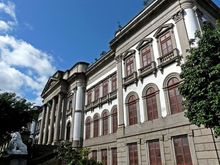
Education
Setzenbrand is home to the Zweig Institute, the country's only educational institution, as well as the PLANET which, despite not being an educational institution per se, does scientific research, for which purpose it provides educational instruction. Due to the multiple limitations typical of a micronational state, the Ebenthal is unable to maintain a complex public education system. Nevertheless, the citizens of Setzenbrand, all possessing dual Brazilian citizenship, make use of the public and private educational systems of the Brazilian surrouding State of Rio de Janeiro. The Setzenbrandian government encourages the studies of its inhabitants in the best schools and universities outside its borders and carries out censuses and studies on the subject.
According to older Ebenthaler censuses on the country's former capital - whose territory was inherited by the Setzenbrandian municipality, Setzenbrand is the administrative division with the highest level of schooling among its inhabitants, with 86% of the adult population having engaged in higher education. The census also appointed the Federal University of Rio de Janeiro as the most attended higher education institution by Setzenbrand's inhabitants as well as Ebenthalers as a whole. All children and adolescents in the city are duly enrolled in schools, the vast majority in the Brazilian private network.
Transportation

Public transportation
Setzenbrand owns and operates a series of small roads and unconnected paths that, for the most part, connect the enclaves that form the municipality with neighboring Rio de Janeiro, in Brazil. Due to this, in addition to other limitations typical of micronational states such as finances and legal disputes with the neighboring nation, Setzenbrand does not have a public transport system. However, the municipality is served and unilaterally uses the public transport system of the city of Rio de Janeiro; Buses and metro are the main means of public transport that carry the inhabitants of Setzenbrand from one enclave to another across Rio de Janeiro.
Cars
The Setzenbrandian government estimates that ¾ of the municipality's adult inhabitants have their own vehicles, used as their main means of transport internally, as well as for commuting. Data from the Ministry of the Environment shows that although 99% of vehicles owned by Setzenbrandians are powered by combustion engines, 74% use compressed natural gas or ethanol instead of gasoline; this is due to the reduced cost of gas and ethanol compared to gasoline in the Brazilian market, although the use of gas as fuel requires the installation of appropriate equipment for its maintenance. In the past, Setzenbrand's predecessor municipal corporation touted the adoption of electric vehicles, without success. Nevertheless, the municipal government expects an increase in the electric vehicle fleet over the next 20 years. Although the number of automobile accidents occurring in Setzenbrand is low - just two, it represents a high statistic, considering the size of the municipality, its number of inhabitants and its poor road infrastructure. In order to avoid accidents and further encourage the reduction of pollution, the government actively encourages the replacement of cars by public transport in the neighboring municipality as a means of transport to work and to the other enclaves that form Setzenbrand, as well as the widespread use of bicycles and electric motorbikes.
Bybicles
Although there was no census on the matter, the Setzenbrandian government estimates that a considerable minority of the population, around 20%, makes frequent use of bicycles for leisure purposes and 5% uses it as a main means of transportation. The government publicly encourages the use of bicycles, especially after the creation of the Ministry of the Environment, as a way of stimulating the reduction of pollution through the reduction of carbon emission and reduction of local traffic and for its health promotion. In addition to private bicycles, Setzenbrand also makes use of public bicycles in a partnership between the provincial government, the government of Rio de Janeiro and the Itaú Bank, with a bicycle rental unit of the bank installed in the side sidewalk of the Palace of Rochesburg with permission from Baron Armando, its owner and the municipality's Chief Executive.
Landmarks
Setzenbrand is home to a proportionally number of landmarks, points of interest and tourist attractions. It is the second largest tourist destination in the country in percentage terms, but it is the destination with the largest sheer number and variety of tourist attractions, which move up to ⅛ of the municipal economy in the holiday seasons. According to the Ministry of the Interior in conjunction with the municipal government, the most visited Setzenbrandian landmark is Central Hill Castle, home of the Princess Élida of Ebenthal and the Prince Royal, in the parish of Bruyn am Süd. The castle includes the Elidian Walls, one of the main postcards of the city and Philippau Lake, an artificial lake that is Setzenbrand's only body of water. Other two very important landmarks are the Bubbington Palace, where the King resides, and the Palace of Rochesburg, seat of the municipal government. Also noteworthy are the Royal Library, the Bubbington Observatory, the José Pedrosa Stadium, the only football stadium in the municipality, and the Western Gardens.
Culture
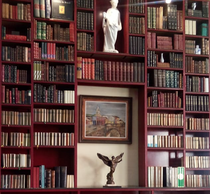


The Setzenbrandian culture is akin to the culture of city Rio de Janeiro with unique traits, characteristic of its population. The Setzenbrandian people is often perceived as rather liberal, due to their usual social open-mindedness, adherence to moder practices and adoption of newe technology. However, despite these characteristics, the Setzenbrandians are quite traditional and maintain a considerable degree of religious fervor. The municipality's architecture ranges from Portuguese neoclassical to modern, and its overall landscapes are filled with plants, as gardening is a well-cultivated practice among Setzenbrandians.
Literature
Inheriting it from the House of Bruyn, whose members form the municipality's core population, a consequence of its upbring in the rich zone of Rio de Janeiro, the Setzenbrandians developed a European-style bourgeois cultural life. Setzenbrand has been the hub of production of most Ebenthaler literature. Prince Mario van der Bruyn, King Arthur II's first cousin, has been the first recorded Ebenthaler writer of success, having published several essays on Brazil's sociology and political history.[11] Other distinguished authors are Jean Roberto, who in 2015 published a horror book centered around a zombie apocalypse set in Brazil, and Armando, 5th Baron of Roches, who authored several poems and had some of them published in poetry books. Princess Heloise has also been a successful figure in Ebenthaler literature, appearing in international (Brazilian) mainstream media giving interviews on her short works.[12]
In 2018 the Royal Fair of Arturia, a literary and social event organized by the House of Beato in partnership with the House of Bruyn, then the rulling house of Roschfallen, and the Al-Moraes Family of Barin, took place in Ebenthal's then-capital Arturia, where many citizens and foreigners came together to exchange and talk about several books of their preference. More than 20 people participated and the fair disposed of more than a hundred books. Subsequently a survey carried out by the Chief Executive of Setzenbrand himself concluded that the main literary style enjoyed by the Setzenbrandian population is historical romance, followed by books and self-help and psychoanalysis, history, poetry and horror.
Music
The music exppression of Setzenbrand is wide, ranging from the most listened genre of Brazilian Popular Music to Rock and Pop. Two rock bands has its origins in the municipality's boundaries, although only one, the Efeito Colateral band, has been active professionally. A heavy and thrash metal band, Efeito Colateral has toured Setzenbrand in an event sponsored by the Ministry of Culture and Education.[13] They have released an album so far and also performed in Barin. Malmünd is also home to the Maestro João Genúncio, King Arthur II's uncle (as husband to the writter Princess Heloise) who has performed twice in the country for a limited audience.
Theater
Due to the employment of Princess Élida of Ebenthal and her husband as principal dancers at the Rio de Janeiro Municipal Theater and Prince João Genúncio as conductor retiring from Brazilian Symphony Orchestra, the population of Setzenbrand has developed a great appreciation for theatrical culture and is a frequent visitor to theaters inside and outside the city. Setzenbrand has only one theatre, the Royal Theater Élida van der Bruyn, located in Bruyn am Süd and managed by Prince Élida. The theater also manages the Royal Ballet School and presents mainly ballet and children's plays. In addition, Royal Theater has already hosted presentations by maestro João Genúncio and other musical groups such as the band Efeito Collateral and the carnival group De Palhaço e Louco Todo Mundo tem um Pouco. According to data from the Ministry of Information, annually all Setzenbrandians attend at least one theater hall, and it is estimated that about 70% of the population attends theaters with some frequency, usually following the career of the Princes of Ebenthal who are professional actors and ballet dancers.
International relations
Seat of organizations
From the election of King Arthur II of Ebenthal as Secretary-General of the Conference of Santiago in 5 January 2022, Setzenbrand has served as de facto as the headquarters to the Conference of Santiago. The city is also headquarters the Micronational Trade Organization.
Twin towns – sister cities
Following the Conference of Santiago Sister Cities Program, Setzenbrand is twinned with:
 Persenburg, Karnia-Ruthenia
Persenburg, Karnia-Ruthenia Triunphus, Roschfallen
Triunphus, Roschfallen Barbarossa, New Southern Rhine
Barbarossa, New Southern Rhine Aldea de Pedro, Rino Island
Aldea de Pedro, Rino Island Klöw, Sildavia
Klöw, Sildavia Santiago do Sacramento, Quinta Velha
Santiago do Sacramento, Quinta Velha
See also
References
- ↑ "Temperatura Mínima (°C)" (in português). Brazilian National Institute of Meteorology. 1961–1990. Archived from the original on 8 August 2014. Retrieved 8 September 2014.
- ↑ "Temperatura Máxima (°C)" (in português). Brazilian National Institute of Meteorology. 1961–1990. Archived from the original on 8 August 2014. Retrieved 8 September 2014.
- ↑ "Temperatura Média Compensada (°C)" (in português). Brazilian National Institute of Meteorology. 1961–1990. Archived from the original on 8 August 2014. Retrieved 8 September 2014.
- ↑ "Precipitação Acumulada Mensal e Anual (mm)" (in português). Brazilian National Institute of Meteorology. 1961–1990. Archived from the original on 8 August 2014. Retrieved 8 September 2014.
- ↑ "Temperatura Mínima Absoluta (ºC)". Brazilian National Institute of Meteorology (Inmet). Retrieved 8 September 2014.
- ↑ "Temperatura Máxima Absoluta (ºC)". Brazilian National Institute of Meteorology (Inmet). Retrieved 8 September 2014.
- ↑ "Número de Dias com Precipitação Maior ou Igual a 1 mm (dias)". Brazilian National Institute of Meteorology. Archived from the original on 27 August 2014. Retrieved 8 September 2014.
- ↑ "Insolação Total (horas)". Brazilian National Institute of Meteorology. Archived from the original on 8 August 2014. Retrieved 8 September 2014.
- ↑ "Umidade Relativa do Ar Média Compensada (%)". Brazilian National Institute of Meteorology. Archived from the original on 8 August 2014. Retrieved 8 September 2014.
- ↑ The Clan Brum. Published on 8 December 2019. Retrieved on 1 January 2021.
- ↑ Fluminense Federal University. Cantareira by Mário Sérgio Brum. Published in 2001. Retrieved on 10 December 2020.
- ↑ "Bebezão Quatrocentão" (in português). O Globo. 2015. Archived from the original on 18 January 2015. Retrieved 5 July 2021.
- ↑ Efeito Colateral. Published on 2014. Retrieved on 30 December 2020.


